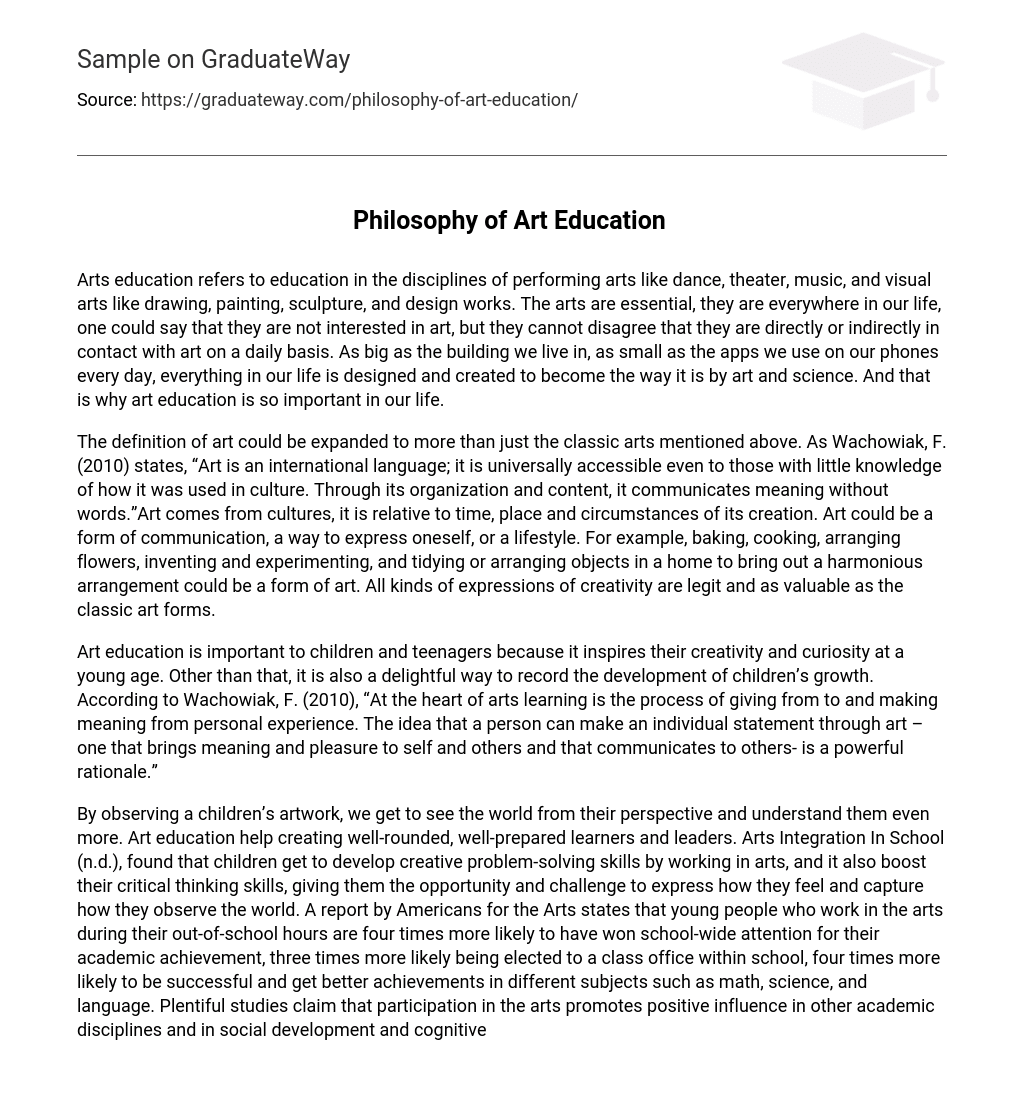Arts education refers to education in the disciplines of performing arts like dance, theater, music, and visual arts like drawing, painting, sculpture, and design works. The arts are essential, they are everywhere in our life, one could say that they are not interested in art, but they cannot disagree that they are directly or indirectly in contact with art on a daily basis. As big as the building we live in, as small as the apps we use on our phones every day, everything in our life is designed and created to become the way it is by art and science. And that is why art education is so important in our life.
The definition of art could be expanded to more than just the classic arts mentioned above. As Wachowiak, F. (2010) states, “Art is an international language; it is universally accessible even to those with little knowledge of how it was used in culture. Through its organization and content, it communicates meaning without words.”Art comes from cultures, it is relative to time, place and circumstances of its creation. Art could be a form of communication, a way to express oneself, or a lifestyle. For example, baking, cooking, arranging flowers, inventing and experimenting, and tidying or arranging objects in a home to bring out a harmonious arrangement could be a form of art. All kinds of expressions of creativity are legit and as valuable as the classic art forms.
Art education is important to children and teenagers because it inspires their creativity and curiosity at a young age. Other than that, it is also a delightful way to record the development of children’s growth. According to Wachowiak, F. (2010), “At the heart of arts learning is the process of giving from to and making meaning from personal experience. The idea that a person can make an individual statement through art – one that brings meaning and pleasure to self and others and that communicates to others- is a powerful rationale.”
By observing a children’s artwork, we get to see the world from their perspective and understand them even more. Art education help creating well-rounded, well-prepared learners and leaders. Arts Integration In School (n.d.), found that children get to develop creative problem-solving skills by working in arts, and it also boost their critical thinking skills, giving them the opportunity and challenge to express how they feel and capture how they observe the world. A report by Americans for the Arts states that young people who work in the arts during their out-of-school hours are four times more likely to have won school-wide attention for their academic achievement, three times more likely being elected to a class office within school, four times more likely to be successful and get better achievements in different subjects such as math, science, and language. Plentiful studies claim that participation in the arts promotes positive influence in other academic disciplines and in social development and cognitive capacity.
Moreover, learning arts also help shape children’s motivation, self-discipline, perseverance and confidence. Many evidences prove that art education bring so much more to children than just drawing and painting.





